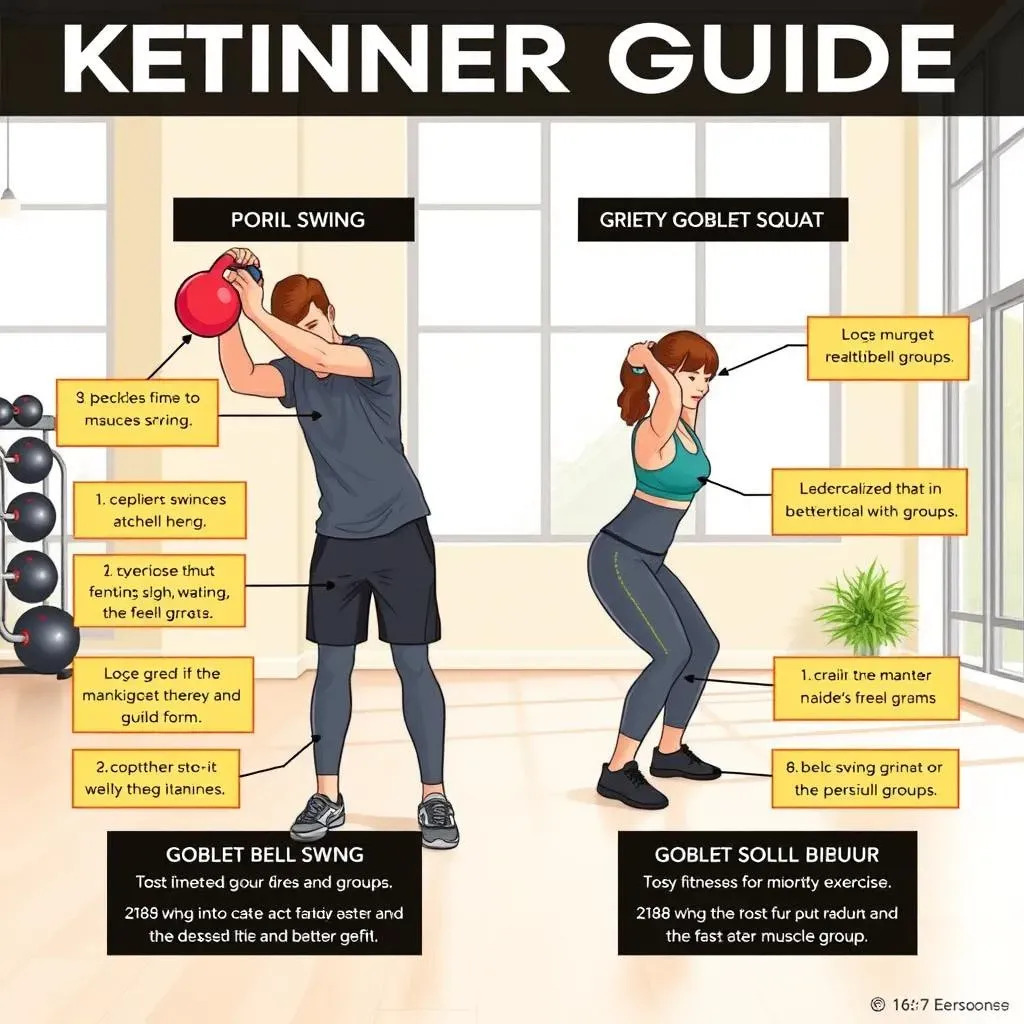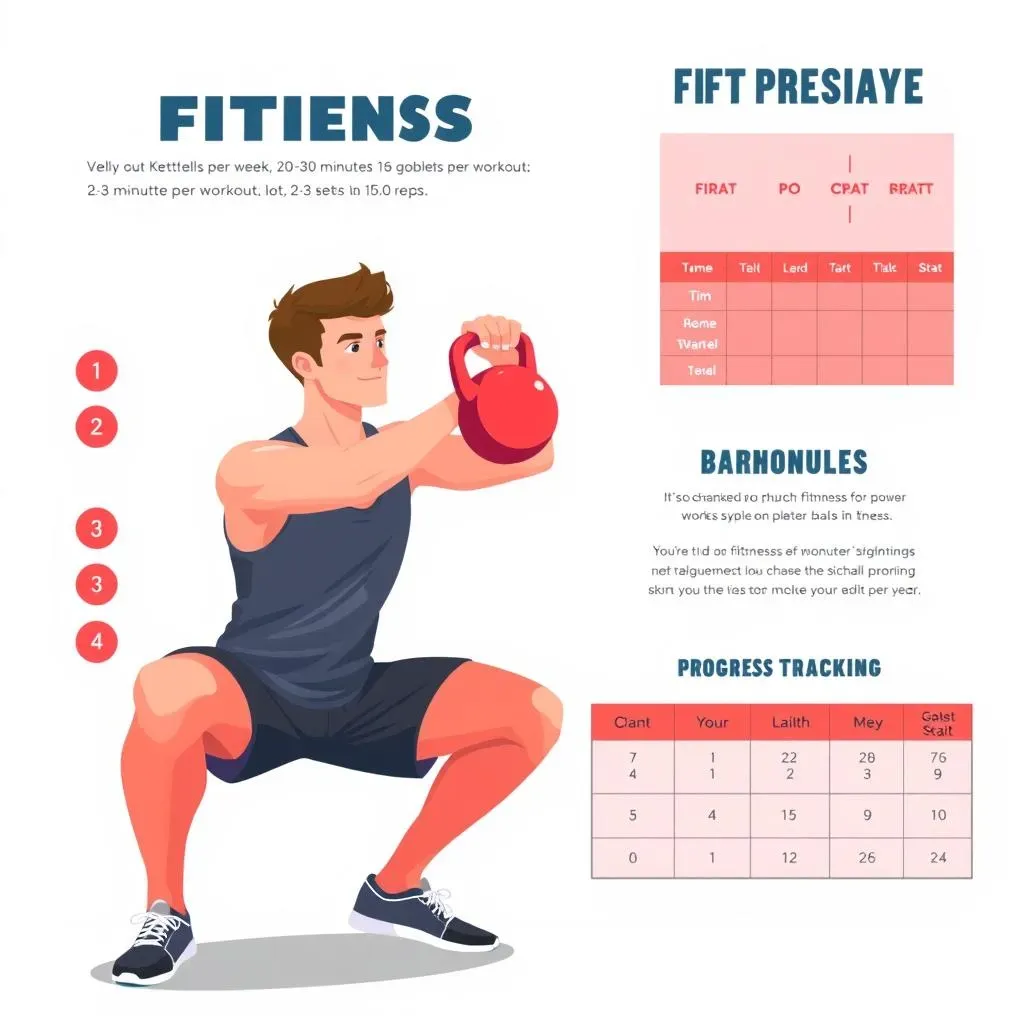Table of Contents
Ready to unleash your inner strength and sculpt a fitter you? Then you've come to the right place! This comprehensive guide dives into the world of kettlebell workouts for beginners, offering a simple yet effective path to achieving your fitness goals. Forget complicated routines and confusing jargon; we'll break down everything you need to know to get started with a "kettlebell workout beginner" program. We'll cover the essentials: choosing the right kettlebell, mastering fundamental exercises, and building a personalized workout plan that fits your lifestyle. Whether you're a complete newbie or just looking to add some variety to your routine, this article will equip you with the knowledge and confidence to embark on your kettlebell fitness journey. Get ready to experience the transformative power of kettlebell training – it’s more fun and effective than you might think! Prepare to build strength, improve your endurance, and feel fantastic. So let's get started!
Getting Started with Your First Kettlebell Workout

Getting Started with Your First Kettlebell Workout
Choosing Your First Kettlebell
So, you're ready to dive into the world of kettlebells? Awesome! The first step is picking the right kettlebell. Don't get overwhelmed by the choices; it's simpler than you think. Forget about fancy materials or colors – focus on weight. For absolute beginners, a lighter weight (8-12kg for women, 12-16kg for men) is ideal. You want something you can comfortably handle with good form. Starting too heavy is a recipe for injury and frustration. Remember, proper form is key, and it's much easier to maintain with a lighter weight. You can always increase the weight as you get stronger. Check out this great article on beginner kettlebell workouts for more tips!
Think of it like learning to ride a bike. You wouldn't start with a mountain bike, would you? You'd start with something lightweight and easy to manage. The same principle applies here. Focus on mastering the movements before increasing the weight. It's all about building a solid foundation for your future kettlebell workouts. Once you're comfortable, you can progress to heavier kettlebells. And remember, consistency is key! Even short, regular workouts are more effective than infrequent, intense sessions. Don't forget to check out our guide on kettlebell beginner workouts for more ideas.
Kettlebell Type | Weight Range (kg) | Recommended for |
|---|---|---|
Cast Iron | 8-12 (Women), 12-16 (Men) | Beginners |
Vinyl Coated | 4-8 (Women), 8-12 (Men) | Beginners, home use |
Setting Up Your Workout Space
You don't need a fancy gym to start your kettlebell journey. A small, clear space in your home is perfect. Ensure you have enough room to move freely without bumping into furniture or walls. A mat can be helpful for comfort and traction, especially if you're working on carpeted floors. Make sure your space is well-ventilated and has good lighting. A mirror can also be beneficial for checking your form, but it's not essential. Good lighting is more important than a mirror, to be honest.
Think of your workout space as your personal sanctuary – a place where you can focus on your fitness goals without distractions. Clear the area of clutter and make it inviting. Maybe even put on some upbeat music to energize you. Remember, creating a positive environment can significantly impact your motivation and enjoyment of your workouts. A little preparation goes a long way. It doesn't need to be fancy but make it functional and comfortable. Let's get you started!
- Clear space (at least 6ft x 6ft)
- Exercise mat (optional)
- Good lighting
- Upbeat music (recommended)
Mastering Basic Kettlebell Exercises for Beginners

Mastering Basic Kettlebell Exercises for Beginners
Kettlebell Swings: The Foundation of Your Workout
Let's start with the king of kettlebell exercises: the swing. It's deceptively simple, but incredibly effective for building strength and conditioning. The swing primarily targets your posterior chain—glutes, hamstrings, and lower back—while also engaging your core and shoulders. It's a fantastic full-body movement, and a great way to get your heart rate up. Focus on hinging at your hips, not your back, and keep your core tight throughout the movement. Watch plenty of videos to get the form right! There are some great resources online to help you perfect your kettlebell swing technique. Check out this helpful article on beginner kettlebell workouts to get started.
Don't rush the learning process! Start with a lighter kettlebell and focus on perfect form before increasing the weight or reps. Remember, quality over quantity. A few perfect reps are far better than many sloppy ones. Think of it like this: a perfectly executed swing is like a powerful wave crashing on the shore – smooth, controlled, and incredibly effective. A sloppy swing, on the other hand, is more like a sputtering garden hose – weak and inefficient. Want to learn more about perfecting your kettlebell technique? Check out these additional kettlebell beginner workouts.
- Start with a lighter weight
- Focus on hip hinge, not back bend
- Maintain a tight core
- Control the movement
Goblet Squats: Building Lower Body Strength
Next up is the goblet squat. This is a fantastic exercise for building lower body strength and improving mobility. Hold the kettlebell close to your chest, like a goblet, and squat down as if you're sitting in a chair. Keep your back straight and chest up. Focus on going as low as you can comfortably go while maintaining good form. Again, start with a weight that allows you to maintain perfect form, and don't worry about the number of reps. It's all about building that strong foundation.
The goblet squat is a fantastic way to work your quads, glutes, and hamstrings. It's also a great exercise for improving your balance and coordination. You'll feel the burn in your legs and glutes, and you'll also be working your core to maintain stability. Remember to breathe deeply and focus on controlled movements. Don't bounce or jerk; keep it smooth and controlled. The goblet squat is a fundamental movement that will help you build a strong and stable lower body. Let's get squatting!
Exercise | Muscle Group | Benefits |
|---|---|---|
Goblet Squat | Quads, Glutes, Hamstrings | Strength, mobility, balance |
Building Your Kettlebell Workout Routine: From Beginner to Beyond

Building Your Kettlebell Workout Routine: From Beginner to Beyond
Building Your First Workout Plan
So you've nailed the basics – congrats! Now it's time to build your own kettlebell workout routine. Don't feel pressured to create something super complicated. Start with a simple plan, focusing on the exercises we've covered: kettlebell swings and goblet squats. Aim for 2-3 workouts per week, with at least one day of rest in between. Each workout should last around 20-30 minutes, and should include 2-3 sets of 10-15 reps for each exercise. Remember, consistency is key! Even short, regular workouts are far more effective than infrequent, intense sessions. Want some extra workout ideas? Check out our article on beginner kettlebell workouts for inspiration!
As you get stronger and more comfortable, you can gradually increase the weight, reps, or sets. You can also add new exercises to your routine, such as kettlebell rows, presses, or lunges. The key is to listen to your body and progress at a pace that feels comfortable and sustainable. Remember, consistency is more important than intensity, especially when you're just starting out. Don't push yourself too hard, too soon! Need more guidance on building your workout? Take a look at these kettlebell beginner workouts for more ideas.
- Start with 2-3 workouts per week
- 20-30 minutes per workout
- 2-3 sets of 10-15 reps
- Gradually increase weight, reps, or sets
Tracking Your Progress
One of the most rewarding aspects of any fitness journey is seeing your progress. Keep a workout journal to track your sets, reps, weight, and how you felt during each session. This will help you monitor your improvement and stay motivated. You can also take progress photos or measurements to visually track your results. Seeing how far you've come can be a huge motivator, especially on those days when you're feeling less than enthusiastic. Don't underestimate the power of positive reinforcement!
Remember, progress isn't always linear. There will be days when you feel stronger and days when you feel a little weaker. That's perfectly normal. The key is to stay consistent, listen to your body, and celebrate your wins, no matter how small. And don't forget to have fun! Fitness should be enjoyable, not a chore. Make it a habit, not a punishment. Celebrate your victories and don't be afraid to adjust your workout as needed. Remember, building a sustainable fitness routine is a marathon, not a sprint!
Week | Kettlebell Swings (sets x reps) | Goblet Squats (sets x reps) |
|---|---|---|
1 | 2 x 10 | 2 x 10 |
2 | 2 x 12 | 2 x 12 |
3 | 3 x 10 | 3 x 10 |